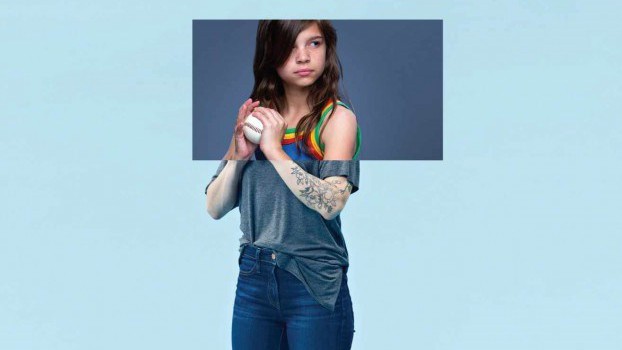It can be said that PHD acts with surgical precision when executing media programs. After all, it got the Gold, and that takes an adroit hand. Its recent track record illustrates it: winning Bronze in 2008 (the inaugural juried MAOY), and cracking the top five in 2009, plus throwing in a Grand Prix from the Internationalist for good measure.
It was PHD’s work on the “Abrupt Endings” campaign for Suicide Action Montreal that nabbed that last award. Successful work for Unilever Canada on Becel’s “Love Your Heart” effort and Axe’s “Hair Games” have also done well to pad its resumé.
Certainly, helping PHD stitch together media solutions has been its emphasis on creativity and collaboration, two things grafted onto its DNA. Its Canadian sponsorship of World Creativity Week is one way in which the agency has exhibited its artistic learnings.
“It made a lot of sense for us in terms of being representative of what we believe and what we think we’re all about,” says Fred Forster, president and CEO, PHD Canada.
The theme at PHD this year was “Recess,” which saw its employees take short breaks during their workday to write, draw, show and tell, and generally escape the daily grind to spend more time with the right side of their cerebrums. Now the PHD network is looking at sponsoring Creativity Week globally.
The association began in 2005 when the agency started working with Toronto-based creativity consultant and Creativity Week founder Marci Segal, to create an internal 18-month management skill-building program called Passport to Innovation.
“That more than anything else has helped us and has really defined us in terms of the creative work we’ve been doing,” says Forster. “We’re always looking for ways to heighten the sensitivity towards creativity, to make sure there’s an ongoing awareness that we want to inspire people to do great creative work.”
That philosophy extends right down to PHD offices. Montreal-based Touché!PHD, for example built a room specifically for brainstorming, which Alain Desormiers, president, Touché!PHD, says is like something you would see in a creative agency – beanbag chairs, lots of windows, you get the idea.
Of course, both Forster and Desormiers agree that given a rapidly changing media landscape, continued emphasis on creative collaboration, not just internally, but through more immersive relationships with creative partners and clients, is what will drive success for their agency. Lately PHD has also been taking steps to further improve upon the science behind what it does.
“The media agency of the future’s role is really switching from being a facility that just determines strategy and executes, to a facility that really is in the business of staying with consumers in real time,” says Forster. “And, what goes along with that is having metrics and analytics that follow the consumer in real time.”
Thus was born Hive, a tool PHD developed in the U.S. that asks a roster of people across North America
open-ended questions online and gets consumer sentiment in real time. Implemented in Canada this year,
it allows the agency to gather rich data on the cheap, which provides qualitative and quantitative measures of how people feel about its brands and how those brands stack up against competitors.
“That information is crucial in determining what the communications strategy should be and it gives you really good nuanced information that you can’t get from syndicated studies, or from an online panel, and you can get that information right away.”
So, what else will agencies have to do in order to foster success in the future? Well, it’s to be sure that PHD has a pretty good idea. After all, they wrote the book (see Media Agency 2014: PHD on the Future of the Media Agency).
Suicide Action Montreal prevents abrupt endings
Montreal has one of the highest suicide rates in the world. This serious problem affects every segment of the population, regardless of age, income or gender.
Suicide Action Montreal wanted to promote its prevention hotline and raise awareness that we can all potentially be hurt by suicide, which often strikes when we least expect it.
Shock is the first reaction experienced by those affected by a loved one’s suicide. The media strategy was to create abrupt endings, like suicide itself. To ensure it was obvious, messaging was focused in environments that were happy and positive, suddenly overshadowed by a “premature end.”
The “Abrupt Endings” campaign was launched with a TV stunt during Bye Bye, an annual New Year’s Eve comedy review. Sixty percent of the population cheers joyously when the show completes the countdown to midnight. In a feat never attempted before, the countdown was overshadowed by the Suicide Action board: “We don’t like saying Bye Bye. Suicide Action Montreal. Take the time this holiday season to remind your friends and family that you love them.”
The campaign continued on TV with end-of-show credits suddenly popping up in the middle of 10 popular shows, followed by the message: “Does this premature end surprise you? What if it this was the life of someone you loved? Suicide Action Montréal. 1-888-APPELLE.” The show then resumed as normal. This integration was broadcast during program content – not commercial time.

On two leading radio stations, the concept involved interrupting the hit song “Hold the Line” with the singer voicing the following text: “If you think this ended too soon, what if it was the life of a loved one? Suicide Action Montreal. 1-866-APPELLE.” Immediately following the song, station hosts spoke about prevention and repeated the phone number.
Calls to Suicide Action Montreal increased by 35%, each representing a saved life. Awareness of Suicide Action Montreal increased by 60%. The visibility created by this campaign was 20 times greater than its budget could have delivered with a traditional media buy.
Axe gets in the hair games
Guys can be unaware that their hair sends strong signals to girls about their personality, attitude to life and hook-up potential. The task was to communicate that Axe is here to help guys get girl-approved hair.
Male consumers have shifted from basic/unisex products towards those that fulfill a particular need. In fact, male-specific products are growing four times faster than general market ones used by men. There was a huge opportunity to expand male haircare’s portion of the grooming category.
To reach the 19-year-old single and slightly clueless target, PHD went where he lives – online, and videogames in particular. In fact, 70% of Axe’s core target (males 18-34) have at least one home gaming console. The campaign launched with a multi-phased, multimedia plan consisting of extensive television support, targeted online activity, branded integrations and out-of-home executions. 
PHD pioneered the first-ever Branded Destination Experience (BDE) within the Xbox Live user interface environment. It brokered a long-term partnership with Xbox/Massive that allowed Axe to be the first advertiser in Canada to establish a BDE. It spoke directly to the target, in their own language and in their own space.
The Axe Hair BDE gave the users customized exclusive content, including elite game reviews and tips from pro gamers, downloadable Axe themes and icons, and video content designed specifically to appeal to the target. An Axe-commissioned video series took a behind-the-scenes look at the training, preparation and style of the Canadian Pro-Gaming team, while seamlessly integrating Axe branding.
The partnership also included extensive in-game messaging and ongoing exposure within the Xbox Marketplace, all driving users to the BDE. Furthermore, it offered PHD the ability to integrate Axe content, developed for other channels, into the gaming realm.
The clickthrough and time spent significantly exceeded historical Axe campaign averages. The program was measured based on engagement with the Axe Hair branded content. It was such a success that the top performing video content piece was viewed by a full third of guys who visited the Axe BDE.
Becel loves your heart
This was year three of the Becel “Love Your Heart” campaign, which aims to inspire women 25 to 54 to make heart health a priority.
PHD knew that capturing women’s attention through key influential figures would be the way to get them to consider their heart health.
Partnerships were formed with two well-known directors/actors (Sarah Polley for English and Pascale Bussières for French markets) to each create a two-minute short film to express Becel’s “Love Your Heart” message. (Polley later removed her name from the project, claiming she was unaware of the corporate sponsorship.) These were The Heart in English and Le Coeur C’est Sacré in French.
The directors’ shorts would premiere during the Oscars and its French equivalent, Les Jutra. For the Oscars, PHD partnered with entertainment show etalk. The partnership included on-set coverage of the film shoot, sponsored editorial clips featuring celebrities and etalk promos featuring hosts Tanya Kim and Ben Mulroney encouraging viewers to watch the premiere of the short film during the Oscars. 
Integration during the etalk Red Carpet pre-show included Kim wearing a red dress (a symbol of the cause) by Canadian designer Andy Thê-Anh. A piece detailing Andy’s designing of the dress and its connection to Becel aired during the pre-show. Mulroney also wore a red pocket square and each host mentioned Becel’s “Love Your Heart” campaign.
In a first, the premiere of The Heart aired right after the Oscar Short Film award. The full commercial block was bought by Becel, and the film ended with Mulroney encouraging viewers to learn more on Facebook.
The campaign was supported by an advertorial in Canadian Living, featuring an interview with Kim and dress sketches by Thê-Anh.
In French Canada, the film premiered in-show during Les Jutra. After the awards, Bussières was interviewed during a show dedicated to the winners. An advertorial in the celebrity magazine 7 Jours featured an interview with Bussières discussing the making of the film and her partnership with Becel.
Both English and French films gained further exposure through digital pre-roll and cinema ads.
This campaign contributed to a 35% share increase over the past three years. Becel went from zero to 20,000 Facebook fans, campaign recognition was 44% above norms and visits to the Becel site increased 50% vs. the same period last year.
Jump to:
Silver: Starcom keeps innovating
Bronze: Cossette goes deep with digital






















